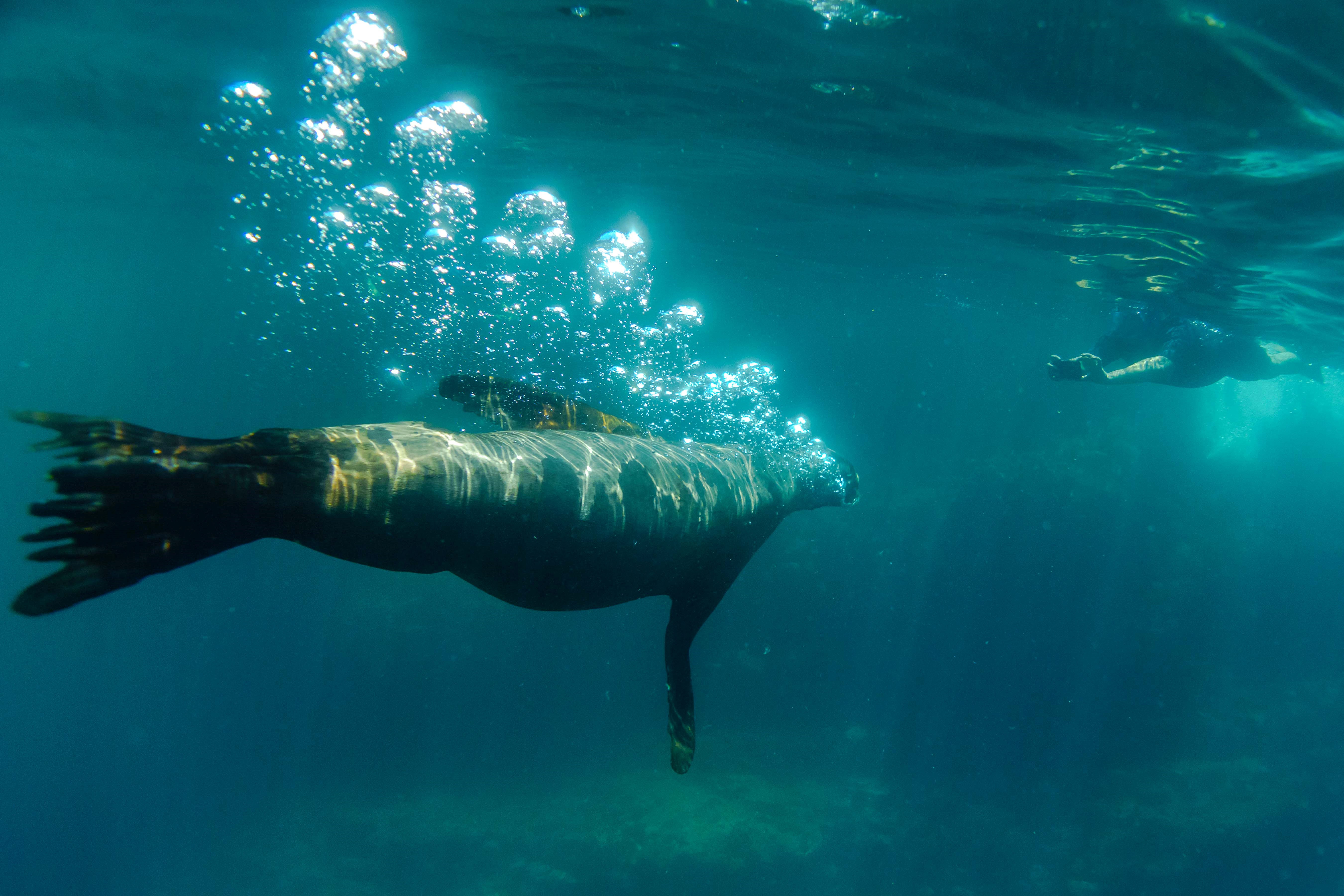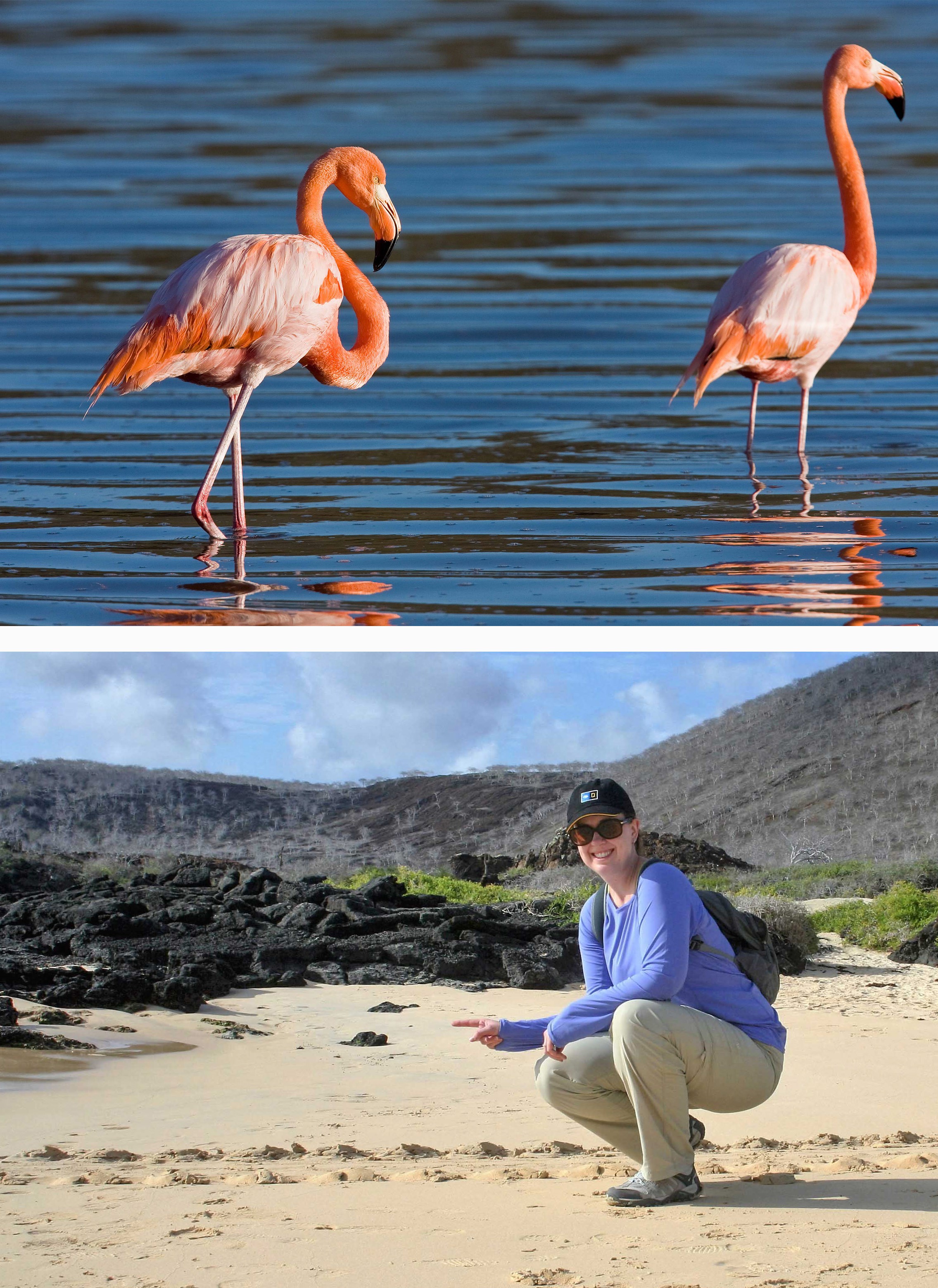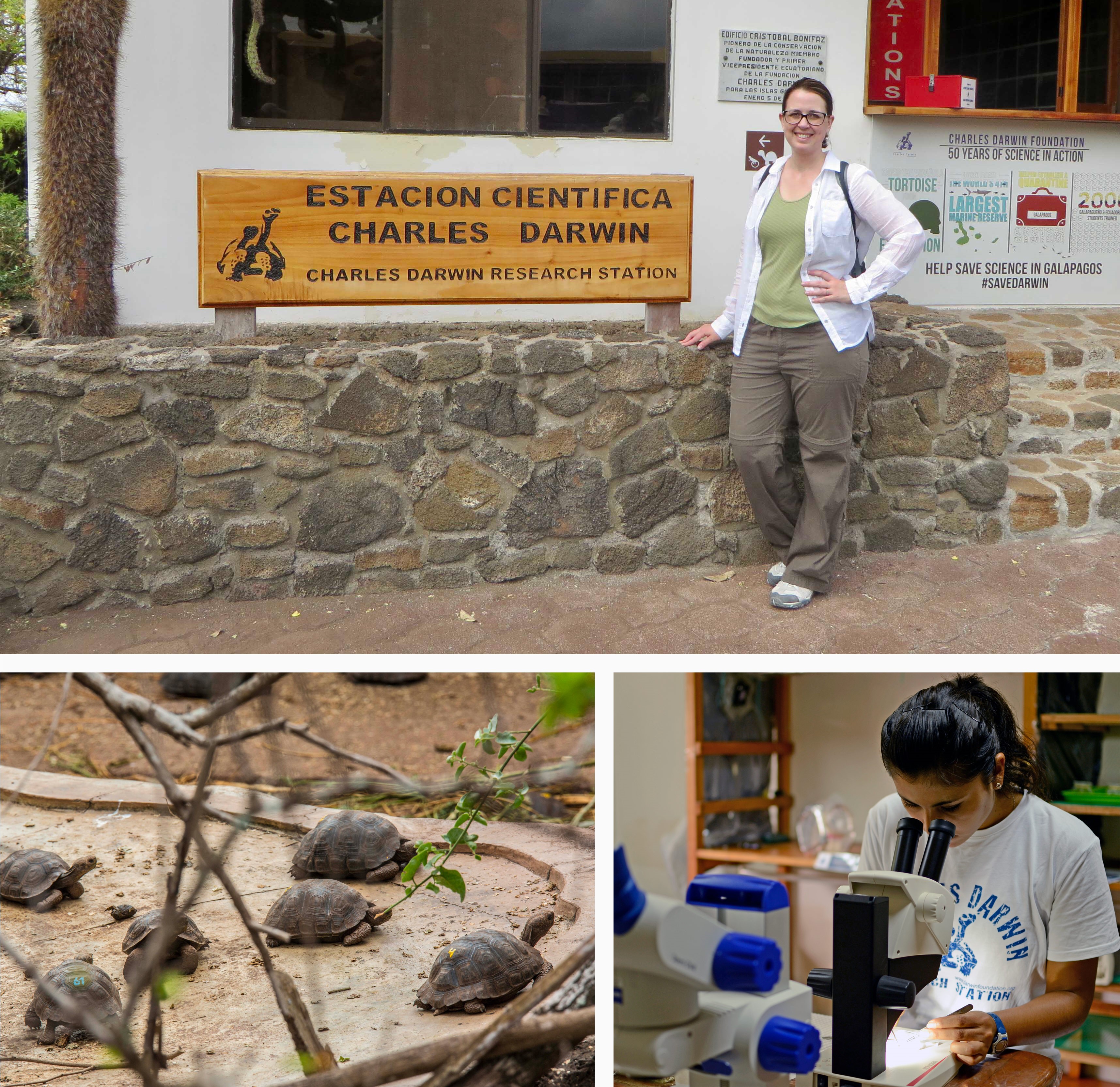SEE IT: A Love Story Discovered in the Galápagos Islands
This original essay by novelist Angie Hockman coincides with the release of her new rom-com, "Shipped," out now from Simon & Schuster (a ViacomCBS Company).
The Galápagos Islands are one of the most magical places on Earth. When I traveled aboard National Geographic Endeavour in 2016 for a Lindblad-National Geographic voyage to Galápagos, I never expected how deeply the archipelago—and its precious wildlife, soul-stirring scenery, and local community dedicated to conservation—would touch my heart.
The experience inspired me so deeply, in fact, that I set my debut romantic comedy novel, "Shipped", on a fictional small-ship adventure cruise in the Galápagos Islands. From cliffsides dotted with preening blue-footed boobies to lush highlands where giant tortoises roam, here are a few of my favorite real-life locations from "Shipped" that you can experience in the Galápagos—plus, some quotes taken right from the pages of my book.
1) Punta Suarez, Española Island
"There are marine iguanas everywhere. Marine iguanas on rocks. Marine iguanas lying in massive piles, clumped together in the bone-strewn sand. Marine iguanas slinking into the frothy surf next to sea lions lumbering down the beach. The smell might be overpowering, but the sight is incredible."
When you disembark at Punta Suárez on Española Island for a scenic hike along the coast, prepare to be wowed by wildlife. There are so many marine iguanas, Galápagos sea lions, swallow-tailed gulls, blue-footed boobies, and Nazca boobies that you actually have to watch your step. Even more striking? The feeling of pure wonder you experience as you witness waved albatross circling above, preparing to land. Or blue-footed boobies engaging in their epic mating dance. And the view, once you reach the furthest point in your hike—a promontory of dramatic cliffs with an oceanside blowhole rhythmically spouting a geyser of water against a backdrop of pounding waves—will capture your imagination and leave you with memories to last a lifetime.
2) Gardner Bay, Española Island
"The seafloor turns rocky and the Galápagos Marine Reserve unfolds, revealing its treasures in a brightly-colored, watery spectacle."
 Photo: Ralph Lee Hopkins
Photo: Ralph Lee Hopkins
Gardner Bay is renowned for its pristine white sand beach, propensity for sea lions, and its famously friendly residents, the Española mockingbird. But another site here not to be missed is the Galápagos Marine Reserve, and the incredible array of marine species that call it home.
Confession: before traveling to Galápagos, I'd never snorkeled before. In fact, a near-drowning incident as a child left me leery of the ocean (similar to Henley, my protagonist in "Shipped"), but I was determined to overcome my fear and experience the natural treasures of the Marine Reserve firsthand. My first snorkeling stop was Gardner Bay. And boy, am I glad I took the plunge. Snorkeling alongside tropical fish and playful sea lions, and observing the immense beauty beneath the waves, helped me discover something profound: a soul-deep love of the ocean.
3) Punta Cormorant, Floreana Island
"Soon we climb over a ridge, and a pristine, empty beach spreads before the rising sun. I pause at the top of the dune, and my breath leaves me in a whoosh. The beach is bordered on three sides by green shrubs leading to brown hills dotted with white, skeletal trees. The blue of the ocean mirrors the sky above, while light dances off the glittering water like a pathway to heaven."
 Bottom photo of the author on Floreana Island with sea turtle tracks: Lindsey Davis
Bottom photo of the author on Floreana Island with sea turtle tracks: Lindsey Davis
Disembarking at Punta Cormorant on Floreana Island at dawn is well worth the early wake-up call. Starting at an olivine beach at Punta Cormorant where sea lions frolicked in the surf, we hiked past saline lagoons containing dozens of flamingoes the brightest shade of pink I'd ever seen. When a flock of them eventually took to the air, I was stunned; I had never imagined birds that big could fly. And standing alongside sea turtle tracks on a pristine beach, capturing the golden light of dawn as the sun rose over the ocean? Priceless.
4) Charles Darwin Research Station & Tortoise Breeding Center, Santa Cruz Island
"It is only because of intensive breeding programs that we see tortoises in the highlands today. People are the problem. But they can also be the solution.'"
 Photo top, the author at the Charles Darwin Research Center: Lindsey Davis; photo bottom right, Charles Darwin Foundation scientist: Liza Díaz Lalova/CDF
Photo top, the author at the Charles Darwin Research Center: Lindsey Davis; photo bottom right, Charles Darwin Foundation scientist: Liza Díaz Lalova/CDF
No trip to Puerto Ayora is complete without visiting the Charles Darwin Research Station and Tortoise Breeding Center. The story of Galápagos is (sadly) one of destruction: early sailors hunted the famed giant tortoises to near-extinction. But the story is also one of immense hope. Scientists, researchers, nonprofits, government leaders, and community members have undertaken extraordinary efforts to preserve native and endemic species like the Galápagos giant tortoise, and their efforts have successfully saved many species from extinction. Visit the breeding center run by the National Park and you can marvel at giant tortoises up-close and feel inspired by the positive impact people can have on the environment when we choose to take action.
5) Highlands of Santa Cruz Island
"A rustle in the underbrush steals our attention and we stop walking. I gasp as a giant tortoise emerges from behind a grove of bushes not twenty yards away. And it's not just any tortoise. It's a massive mamma jamma, nearly as big as the armchair in my apartment. It must weigh hundreds of pounds and is probably older than the Second World War."
 Photo: Ralph Lee Hopkins
Photo: Ralph Lee Hopkins
The habitats found in the highlands of Santa Cruz are quite different from the arid lowlands of the coast. Scenery transforms and becomes lush and green as you ascend to higher elevations. You can even spot the occasional giant tortoise grazing alongside the road the same way we might see deer here in North America. But to really put yourself in the shoes of an early explorer to Galápagos, visit one of the highland farms where giant tortoises abound in the wild. There's absolutely nothing like hiking through a forest, every sense on high alert, and observing giant tortoises in their natural habitat.
6) Pinnacle Rock, Bartolomé Island
"I turn my back just as the sun creeps out from behind the clouds, illuminating the landscape in dazzling color. At the base of the island, Pinnacle Rock, a jagged, ruddy peak, points toward the blue sky like an arrowhead."
Something you may not know: every island in Galápagos is unique. Since the archipelago is located over a volcanic hotspot, and the islands formed as tectonic plates have slowly shifted over millennia, the age, and therefore the ecosystems, on each island vary widely. Being a young island, Bartolomé appears barren—a windswept expanse of volcanic rock. But then there's the view. Climb the 372 wooden stairs to the top of Bartolomé and you'll be treated to an expansive panorama of neighboring Santiago Island…and one of the most stunning vistas in the Galápagos.
Dreaming about your first trip post-pandemic? Learn more about this sweepstakes for a chance to win a trip to the Galapagos with Lindblad Expeditions—the adventure of a lifetime that inspired the book "Shipped"!
Find your itinerary for a trip to the Galápagos here!



